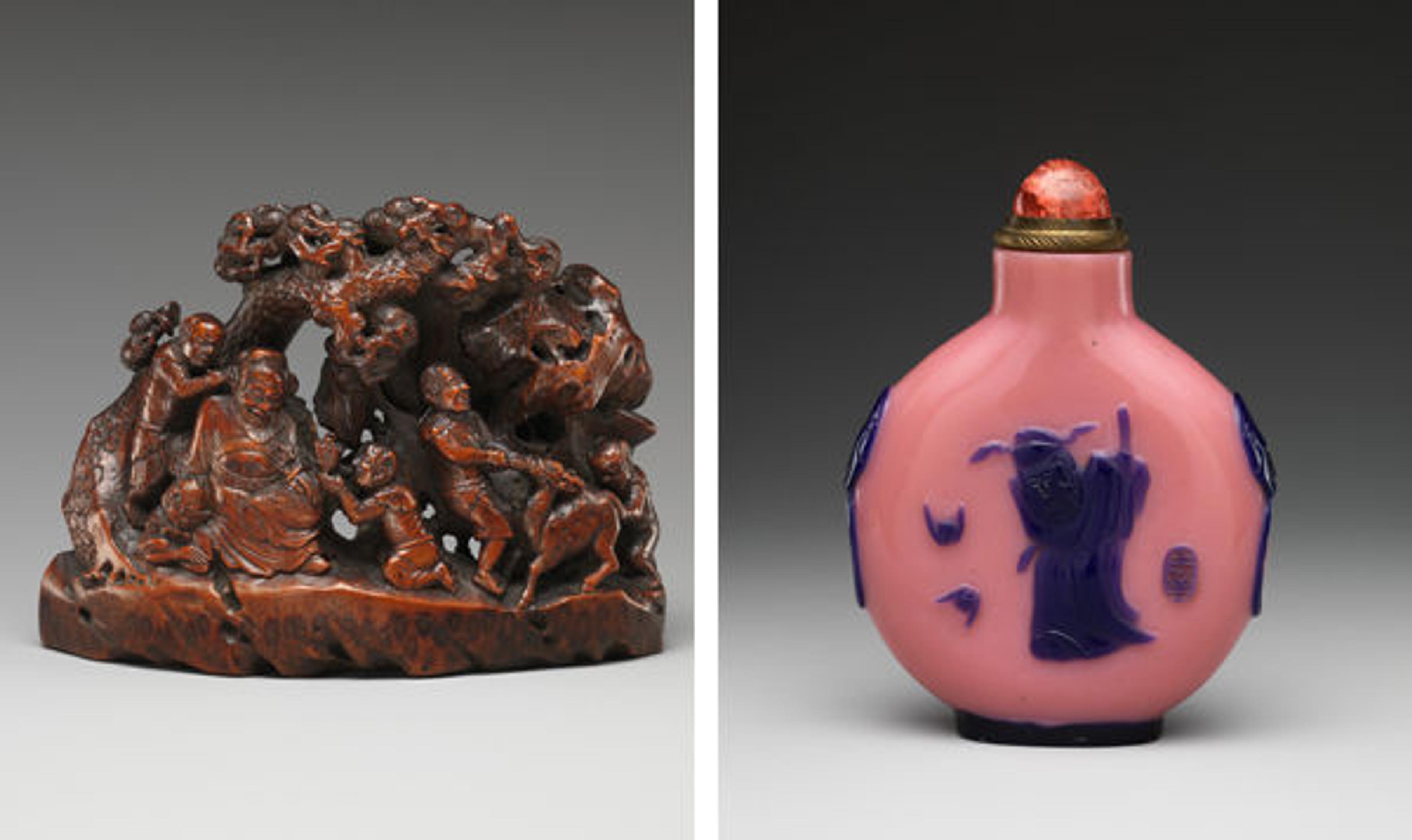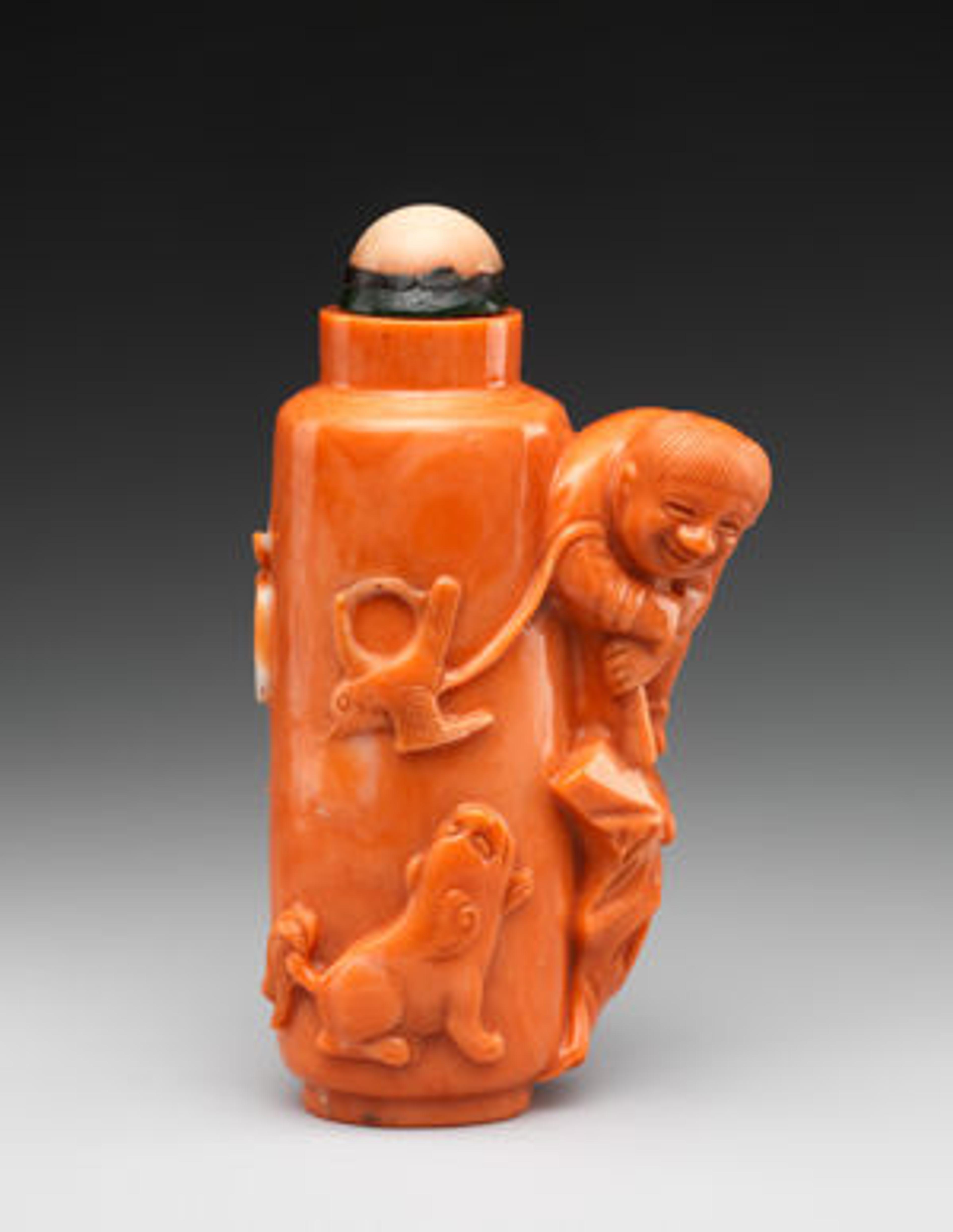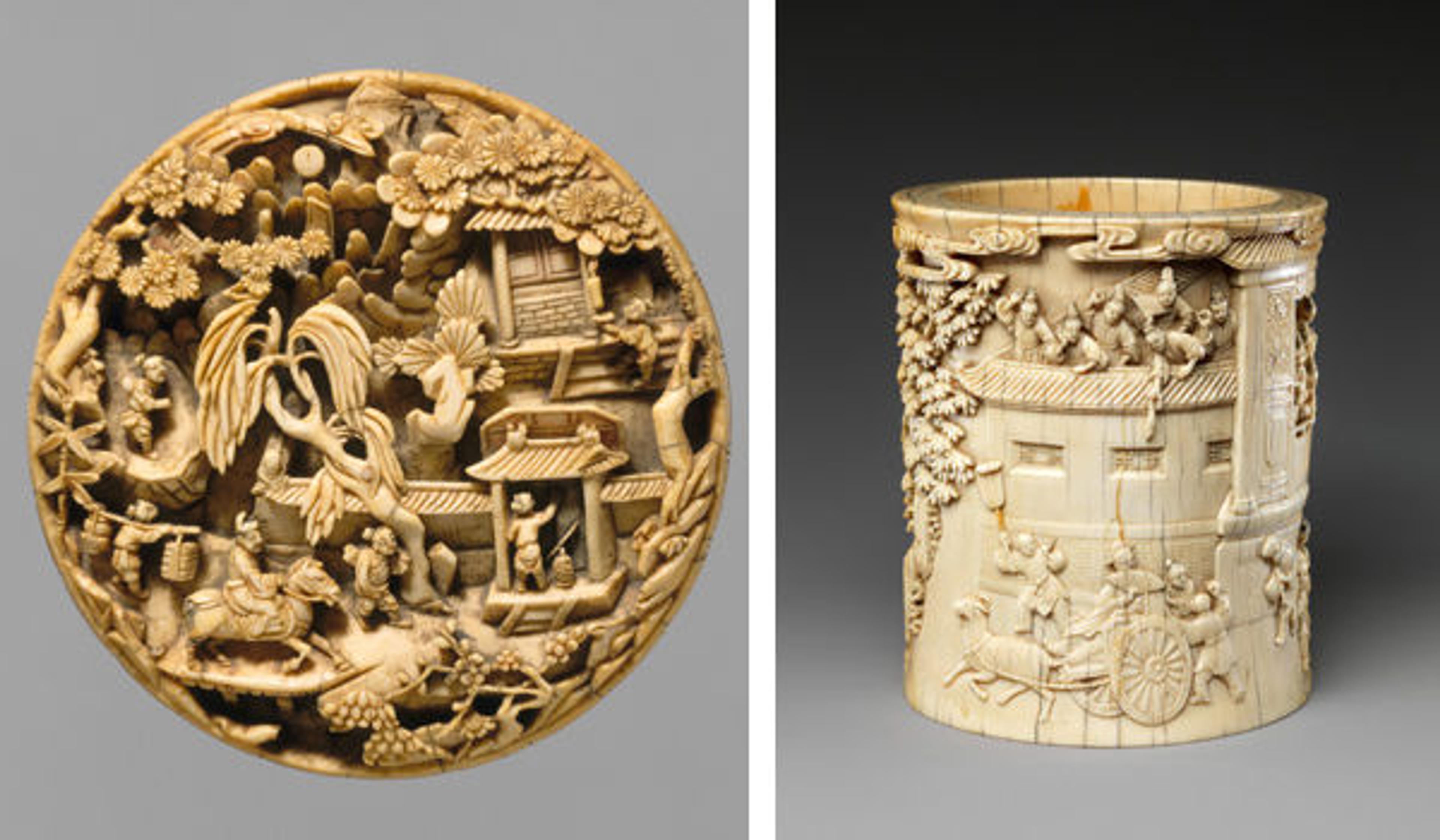Find the Chinese Treasury—if You Dare
«The Florence and Herbert Irving Galleries for Chinese Decorative Arts, located on the mezzanine at the north end of the Museum, are filled with extraordinary objects made in materials that include silk, lacquer, and jade. These galleries can only be reached by an elevator or a staircase from the Chinese painting galleries, however, so finding the artworks displayed there can be categorized as "extreme" museum-going: It takes true commitment.»

Left: Demon Queller Zhong Kui with Demons, late 17th–early 18th century. China, Qing dynasty (1644–1911). Bamboo; H. 4 7/8 in. (12.4 cm); W. 6 5/8 in. (16.8 cm); D. 3 1/4 in. (8.3 cm). The Metropolitan Museum of Art, New York, Purchase, Gift of Elizabeth V. Cockcroft, Bequest of Florance Waterbury, in memory of her father, John I. Waterbury, and Gift of Robert H. Ellsworth, by exchange, 2008 (2008.636). Right: Snuff Bottle with Demon Queller Zhong Kui. China, Qing dynasty (1644–1911), Daoguang period (1821–50). Overlay glass with coral stopper; H. 2 7/8 in. (7.3 cm). The Metropolitan Museum of Art, New York, Bequest of Benjamin Altman, 1913 (14.40.447a, b)
Opened on May 19, the Chinese Treasury (Gallery 219), is based on the treasures boxes (duobaoge) used from the sixteenth to the twentieth century to showcase the collections of emperors and private individuals. The newly renovated space features over 120 spectacular works, typical of the "treasures" that were collected and revered for centuries. Some were crafted from exotic, imported materials such as rhinoceros horn, while others used materials that included lacquer or porcelain developed in China.
These works all tell fascinating and interrelated stories about Chinese art and culture, materials, and themes: For example, the powerful demon-quelling exorcist Zhong Kui—one of many popular religious figures on view—both rests on the back of one of his demonic attendants in a bamboo carving, and strolls with bats on a glass snuff bottle.

An engaging young boy plays on another snuff bottle, while others carved in horn and ivory symbolize blessings such as wealth, fertility, and longevity. The small ivory sculpture can be read either vertically or horizontally.
Left: Snuff Bottle with Boy Flying a Bird. China, Qing dynasty (1644–1911), Qianlong period (1736–95). Coral; H. 2 1/2 in. (6.4 cm); H. incl. stand 3 in. (7.6 cm); W. 1 1/2 in. (3.8 cm); D. 1 in. (2.5 cm). The Metropolitan Museum of Art, New York, Bequest of Edmund C. Converse, 1921 (21.175.282a, b)

Left: Boys with Leaves and Boxes, 19th century. China, Qing dynasty (1644–1911). Horn; H. inc. base 3 1/2 in. (8.9 cm); W. 2 3/4 in. (7 cm); D. 1 1/2 in. (3.8 cm). The Metropolitan Museum of Art, New York, Gift of Ellen Barker, 1942 (42.90.31, 32a, b). Right: Twin Boys, 18th century. China, Qing dynasty (1644–1911). Ivory; H. 2 1/2 in. (6.3 cm); W. 21/2 in. (6.3 cm). The Metropolitan Museum of Art, New York, Lent by Florence and Herbert Irving (L.1997.23.40)
Ivory was also used to make both a disc with a deeply carved scene of a scholar returning home late after a spring outing filled with music, poetry, and wine, as well as a brush pot showing a historical figure whose talent and beguiling appearance spurred women to pelt him with fruit as he passed before them.

Left: Medallion with Return from a Spring Outing, late 16th–early 17th century. China, Ming dynasty (1368–1644). Ivory; H. 1 1/4 in. (3.2 cm); Diam. 3 1/4 in. (8.3 cm). The Metropolitan Museum of Art, New York, Purchase, Friends of Asian Art Gifts, 1993 (1993.176). Right: Brush Holder with Story of Pan Yue or Wei Jie, 18th century. China, Qing dynasty (1644–1911). Ivory; H. 5 5/8 in. (14.3 cm); Diam. of rim: 4 3/4 in. (12.1 cm); Diam. of base: 4 5/8 in. (11.7 cm). The Metropolitan Museum of Art, New York, Promised Gift of Florence and Herbert Irving (L.1997.23.37)
Touchpads in the gallery will allow you to explore these and other objects, either individually or grouped by materials and by themes. So take the time to find the updated Chinese Treasury—if you dare! These "treasures" on view will delight the eye and engage the mind.
Denise Leidy
Denise Patry Leidy is a curator in the Department of Asian Art.